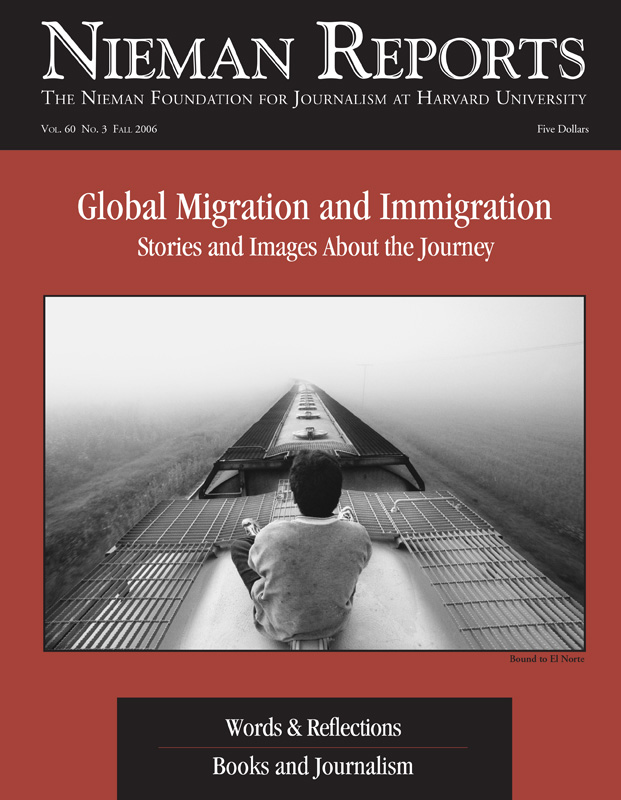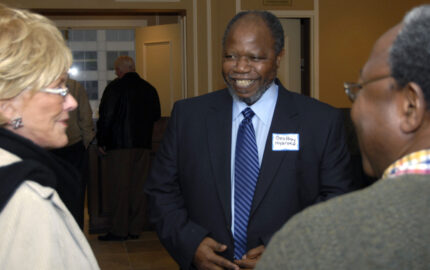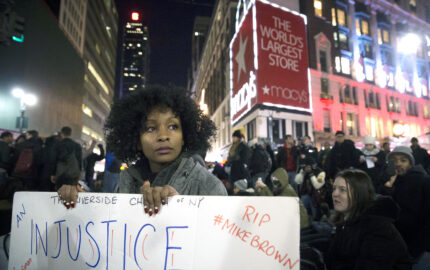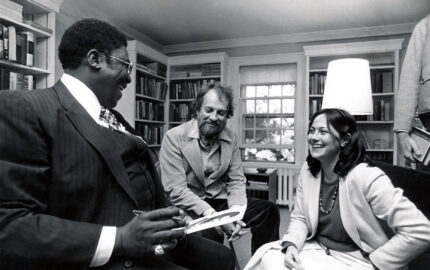The captions on the accompanying pictures are undated. I believe that certain images, like those in this piece, have a timeless aspect to them — an aspect that becomes limited in our minds when dates are attached. As the Nile has flowed through Cairo since pre-Pharaohic times, so too have certain images. I think I have been lucky enough to capture a few of them.
Thirty years ago, just weeks before I started my Nieman year, I left Beirut, which at the time was caught up in the early stages of what would turn out to be a long, deadly and costly civil war. Having lost my house and most of my possessions, I was excited at the respite being offered by a year in academe, yet reluctant to leave Lebanon as the war was a great story. Dangerous, but great.
As you read this, my daughter Iman is in Beirut, writing for The Daily Star, being mentored both by Jamil Mroue, one of my colleagues that Nieman year, and Rami Khouri, a later Nieman who unfortunately carries the burden of being a Yankees fan. She arrived in Beirut to summer at The Daily Star, build up a tan at the Hotel St. Georges, and start graduate school at the American University of Beirut.
She arrived on June 21st, the Israelis arrived on July 12th, and very quickly she and Lebanon were swept up in the vicious maelstrom called "life in the Middle East," a life so many of us know too well. As I was before her, she is young and a bit timid. Born in the United States, hesitant in her willingness to speak colloquial Arabic, not yet fully comfortable with the culture and sensitivities of the Arab Street, and unsure of her ability to both absorb and communicate stories with passion, she inhabits a world that was once new to me. Great, but dangerous.
Last spring our worlds crossed. She had recently finished a year studying at the American University of Cairo, and I was invited to have an exhibit of photographs there.
It was a challenge to edit memories covering 30 years of assignments and visits, my impressions, my photographs. It would not be enough to exhibit pictures of the Pyramids and the Sphinx as tourists see them. Nor did I want to reflect the idealized view that Cairenes and Egyptians imagine it to be. It had to be mine. I wanted Egyptians to see my Cairo — a Cairo of challenges and love, of dysfunction and dignity.
There is pain in some of the photographs. It was painful to take some of them, painful now to look at some of them, and painful to think of the circumstances that created the pain. But beyond the pain there is beauty, there is dignity, there is the triumph of a spirit, inspired by faith, connected through millennium by history and shared experience, forged in the heat of the desert and colored by the gifts given by God.
The gallery visitors responded as I had hoped. They saw themselves through the dust and detritus of their post-colonial condition and were pleased. As was I.
I am going to return to Beirut this fall to see my daughter, hang out with Jamil and Rami, eat kibbe niyeh, the Lebanese steak tartare, as there won't be many fresh fish dinners from the now oil-polluted Mediterranean, and talk about the old days. A book project on Lebanon is now on hold, but there is much other building to be done with families and friends.
The Arab world has claimed my soul; together we drink tea, and I am consumed by her beauty and love. Today, photographs of the Middle East, reflections of encounters with Arabs, continue to saturate newsprint and airwaves but today they are images of horror, of peoples and ideas drifting further apart, estranged from their roots, radicalized by their passions, and surrounded by ignorance, prejudice, violence and intolerance. From Casablanca to cafés in Basra, through living rooms and Bedouin tents and nightclubs and mosques, a nation has become rootless.
I love the Arab Street. As a Muslim, I worship in sacred spaces that have given solace, protection and education for centuries. As an Arab, I walk streets ever aware of history that came before us all, from Asia, Africa and Europe, colonial and post-colonial, and of promises so freely given and as often broken and, as an American photojournalist, I pass through the streets and suqs as a guest, taking photographs that become my memories.
Perhaps my daughter will continue to share this passion. And perhaps she can tell its story better than I have, for in the end I see my images fading, gathering dust, becoming historical relics, set aside for the prurient immediacy of pictures of blood-stained bodies, oil-slick covered beaches, and children playing with cluster bombs.
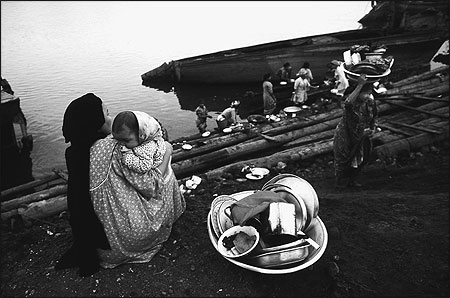
Families rely on the Nile for transport and sustenance. Photographs copyright Robert Azzi 2006. All rights reserved.
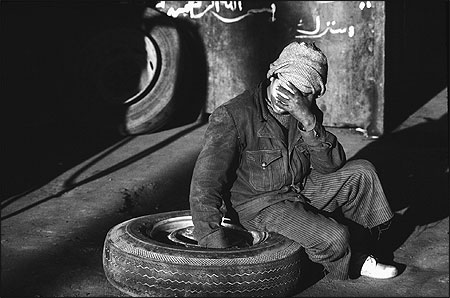
Child labor is omnipresent in Cairo.
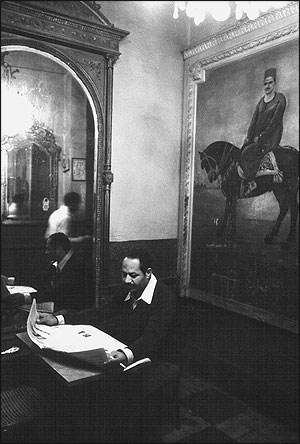
Firdosi café in the heart of the Khan el-Khalili marketplace.

Sheikhs at the Al Azhar Mosque share a quiet moment.
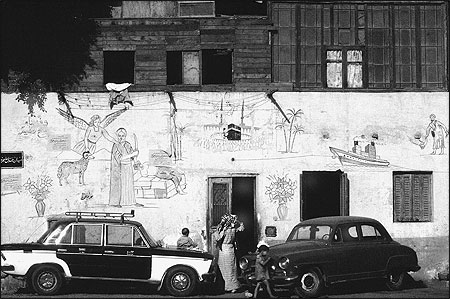
Homeowners decorate the walls of their homes to celebrate the successful completion of a family member's pilgrimage to Mecca.
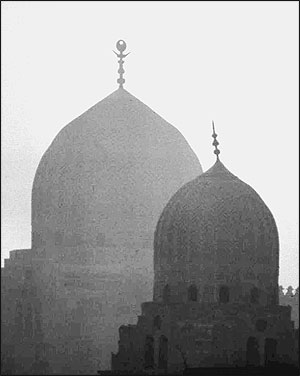
Early morning over Islamic Cairo.
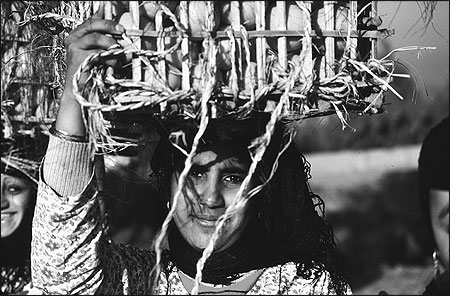
Women bring fresh fruit to the Cairo marketplace.
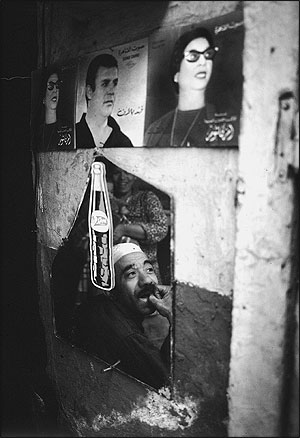
Years after her death, reminders of the great Egyptian diva, Um Khalthoum, remain throughout the city.
Robert Azzi, a 1977 Nieman Fellow, is a photojournalist presently living in Exeter, New Hampshire.
